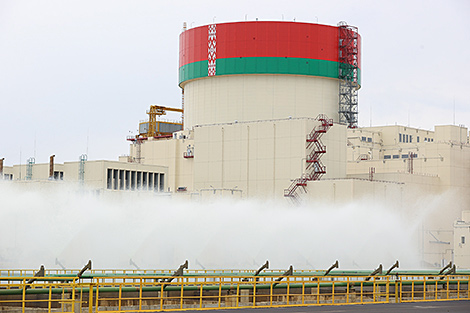Events
What was the radiation situation in Belarus in 2022?

An archive photo
Ensuring radiation safety remains a priority for Belarus, particularly in the light of the construction of its own nuclear power plant. The situation in the area of influence of nuclear power plants located in neighboring countries, including the Chernobyl nuclear power plant, is also being monitored. Radiation monitoring specialists get data round-the-clock and the situation is always under control. Deputy Head of the National Center for Hydrometeorology, Radioactive Contamination Control, and Environmental Monitoring (Belhydromet) Aleksandr Trusov told media about last year’s observation results and whether the commissioning of the first unit of the Belarusian nuclear power plant had affected background radiation levels.
An automated system
Belarus has an automated system for monitoring the radiation situation. The system constantly collects data from automated measurement stations. These stations are located in an area that may be potentially affected by nuclear power plants of neighboring countries – the Ignalina nuclear power plant, the Rovno nuclear power plant, the Chernobyl nuclear power plant, and the Smolensk nuclear power plant. The automated radiation monitoring system also operates in the area of the Belarusian nuclear power plant.
Aleksandr Trusov said: “This system provides information to central government agencies, which will have to implement immediate measures in response to an emergency when necessary. Judging from the system’s performance, I can tell you that no excessive spikes of gamma radiation measurements were registered in 2022. Background radiation levels may spike within normal ranges but it is a normal phenomenon.”
Many years of observation
In addition to the automated radiation monitoring system Belarus measures background radiation levels in 120 sites on the basis of long-term observations. The practice covers the entire territory of the country. “In 2022 Belhydromet took over 20,000 measurements of various parameters. The level of radioactive contamination of atmospheric air in the observation sites matched standard long-term figures. The levels were slightly above the norm in Bragin and Slavgorod but they had developed over a long period of time, too,” Aleksandr Trusov pointed out.
In his words, radiation levels of water objects also remained stable in 2022. The average content of cesium and strontium was much lower than the reference level of radionuclide content in drinking water. “Yet I should note that the water of the Nizhnyaya Braginka River contains more radionuclides in comparison with other rivers because the river’s collecting area is in the exclusion zone of the Chernobyl nuclear power plant,” the official added.
Aleksandr Trusov also said that soil radiation monitoring results also indicate that the radiation situation in territories affected by the Chernobyl catastrophe is stable. In his words, the measurements show no deviations from long-term processes or new trends arising from the presence of radionuclides in soil.
Radiation monitoring in the Belarusian nuclear power plant impact area
Measurements were taken during the construction of the Belarusian nuclear power plant in order to identify the zero point – the original state of the environment before the nuclear power plant went online. Once the first unit of the Belarusian nuclear power plant was commissioned, radiation monitoring could be used to record possible changes. The situation is monitored not only at premises of the Belarusian nuclear power plant but also in the observation area (within a 12.9km radius). Automated control and lab control are used.
“A comparative analysis of results of many years of observations indicates that no spikes of any background radiation parameters have been registered,” Aleksandr Trusov stressed.
The lack of changes in trends of many years of monitoring radiation levels in atmospheric air, surface waters, and soils allows one to conclude that the commissioning of the first unit of the Belarusian nuclear power plant has not affected the radiation situation in the country, the Belhydromet representative stated.







 print version
print version make home page
make home page add to bookmarks
add to bookmarks

